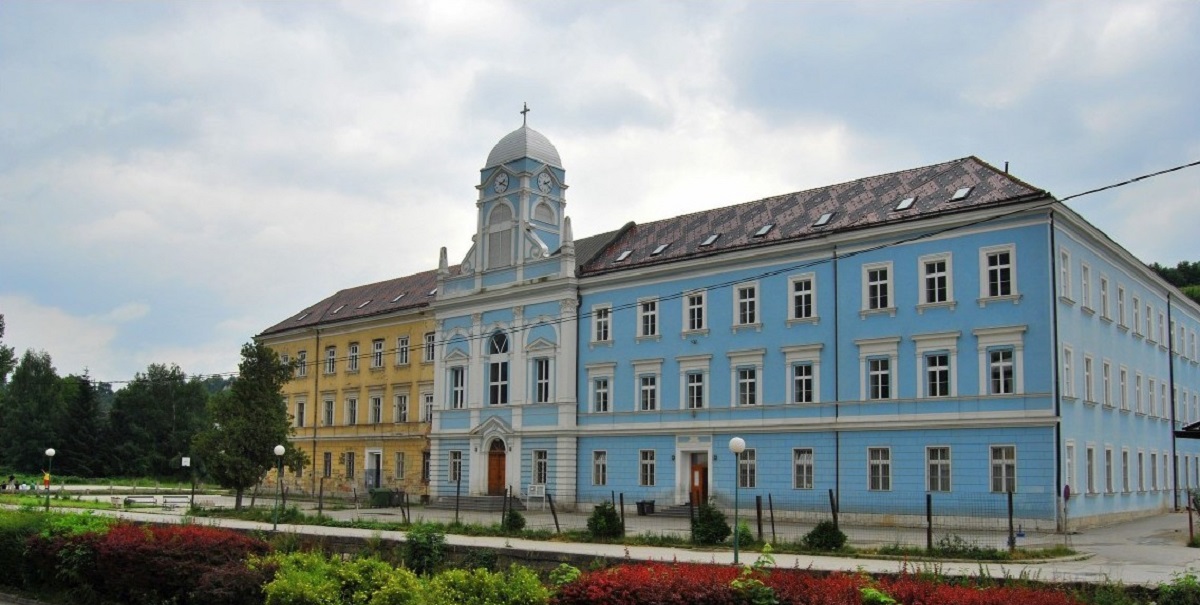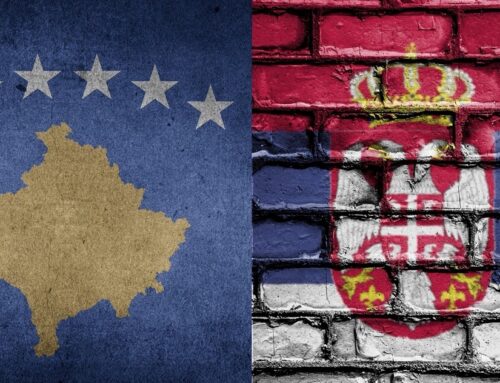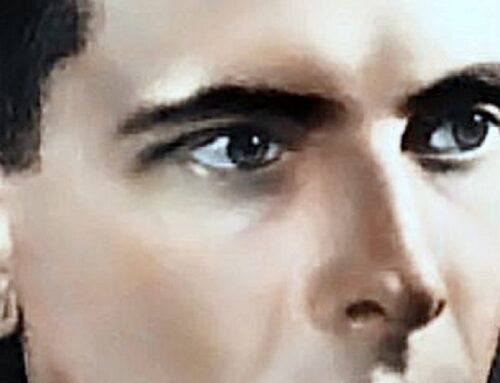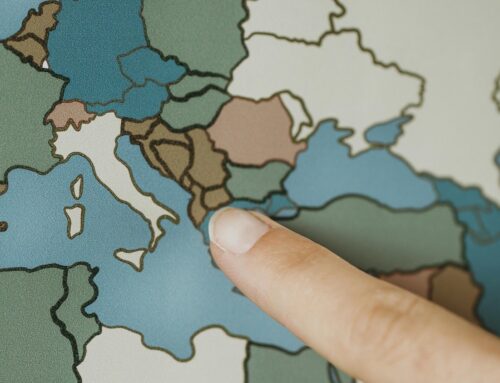Just one month ago, the European Commission gave a surprising update on the EU enlargement process. After fulfilling certain conditions, accession talks would begin not only with Ukraine and Moldova, but also with Bosnia. Ursula von der Leyen showed a welcoming attitude towards the country, saying “the door is open wide”. In particular Bosnia’s former neighbours inside the Habsburg empire, Croatia, Slovenia, and Austria, are keen on getting Bosnia into the EU, on the premise that Bosnia must “finish its homework”.(1) Republika Srpska (RS), the Serb-dominated entity inside Bosnia, plays a big role in the country’s ongoing issues. Nationalism and militarism still fuel the territory, and the positive reaction from RS to Russia’s invasion of Ukraine has caused serious worries about the stability of the Western Balkan region.(2) In postconflict situations, future stability depends on the younger generations. However, in Bosnia, young people are trapped in old systems, particularly in the field of education.(3)
Before, under Yugoslavia, Bosnia had a federal socialist system. The unification of school systems, a real socialist characteristic, did not allow for any ‘ethnic’ or religious differences in curricula. However, multi-ethnic tolerance and unity quickly faded in the 1990s. The war in Bosnia (1992-1995) – a power play between Croatia and Serbia – led to strong divisions along ethnic and religious lines. Invoking fears among the population about the “ethnic other”, Croatian and Serbian elites were in fact just competing for power over Bosnia.(4) The conflict on Bosnian territory officially ended with the Dayton Peace Accords of 1995. ‘Dayton’ separated the country of Bosnia and Herzegovina into two constituent republics, Republika Srpska and the Federation of Bosnia and Herzegovina (hereafter ‘Federation’), and the Brčko District, a self-governing administrative unit subordinate to the country level.(5) The accords were implemented as a ‘quick fix’ to separate people from different ethnicities and religions and put a halt to the war. But these ‘temporary’ solutions, targeting Bosnia’s ‘ethnic’ problem, still exist to this day, in the educational system too.(6)
The current educational policy in Bosnia is decentralised: the ten cantons of the Federation, Republika Srpsksa, and the Brčko district are all individually responsible for their education. This means that the different entities have three distinct sets of curriculums, ‘languages’, and schoolbooks. In particular subjects that are regarded as important for one’s national identity – geography, history, native languages, music education and religious education – have become targets of the ‘politicisation of education’.(7) Moreover, over fifty schools in the ‘Federation’ are part of the ‘two schools under one roof’ system, which was implemented in 2000 by the OSCE as an emergency measure.(8) Such “mono-ethnic schools” generate the physical separation of Bosniak and Croatian students: Bosniaks have classes in the morning, Croatians in the afternoon (or vice versa). Some schools even have separate entrances, where a literal fence divides the two groups. Rather than investing in the general improvement of Bosnian education, for instance buying functional furniture or providing more adequate equipment, a large part of the financial funds goes to the preservation of the double education system.(9)
As Foucault once wrote, education is a “power device” of modern states, as the narration of history ultimately gets decided in the classroom.(10) This also applies to post-conflict Bosnia, where power structures that initiated conflict are still in place, and continue to support their own narratives inside school buildings. For Bosnia to move forward, the country needs to break with old power structures and direct the country towards reconciliation: the healing of the relationship between groups. However, Bosnia’s reconciliation is a challenging and sensitive process. Little factual information is available and not many possibilities to change the other persons’ perspective exist.(11) The “ethnically oriented curricula” of the ‘two schools under one roof’ engrave existing divisions and jeopardise long-term stability.(12) If repairing relationships is about rehumanisation and trust-building, education can play a big role for Bosnia’s next steps ahead.(13)
However, one should also be aware that hope is not lost among the younger generations themselves. In Bosnia, young people coming from varying backgrounds have joined grassroots movements or citizen initiatives to protest against the ‘ethnicisation’ of their country. One example of this is the human rights NGO ‘Vaša prava’ (Your Rights), which has filed a lawsuit to stop the division of pupils in schools.(14) Similarly, a citizen initiative by the name of “Our school” has fought against the building of a segregated school in the city of Jajce.(15) The joint protests of the Bosniak and Croat students against the division of their school made the ministry overturn its decision.(16) Initiatives such as “Our School” have also raised (global) awareness about the problem and have made it an urgent topic on the domestic political agenda.(17) On a smaller scale, several projects inside Bosnia, such as “Friendship with No Borders”, try to foster intercultural dialogue among young people in the region.(18) Ultimately, change depends on the political will of Bosnia’s government and the “possibilities of intercommunal civic engagements”.(19) However, young people have spoken up, and for Bosnia to achieve long-term stability and EU membership, next generations need to be heard and listened to.
Sources:
1 The Habsburg monarchy, which existed from the 15th to 20th century, included, in various forms and sizes, the
territory of current-day Austria, Bosnia, Czech Republic, Croatia, Slovakia, Slovenia, Hungary, and parts of
Poland, Romania, Serbia, and Ukraine.
2 Henry Foy, “How Bosnia got an EU membership boost with a little help from its friends,” Financial Times,
November 8, 2023, https://www.ft.com/content/26d54a23-20db-45e5-a81a-e25b4a19ff22#comments-anchor.
3 Janine Natalya Clark, “Education in Bosnia-Hercegovina: The Case for Root-and-Branch Reform”, Journal of
Human Rights 9, no.3 (2010), 344-362, DOI: 10.1080/14754835.2010.501269
4 Carl-Ulrik Schierup, “Memorandum for Modernity? Socialist Modernisers, Re-Traditionalisation, and the Rise
of Ethnic Nationalism”, in Scramble for the Balkans: Nationalism, Globalism and the Political Economy of
Reconstruction (London: Macmillan, 1997), 33-61.
5 Jasmin Donlić, “›Two Schools Under One Roof‹: Visible Segregation in the Education System in Bosnia and
Herzegovina” in Ist inklusive Schule möglich?: Nationale und internationale Perspektiven, ed. Jasmin Donlić,
Elisabeth Jaksche-Hoffman and Hans Karl Peterlini (Bielefeld: Transcript Verlag, 2019), 273-288.
6 Barbara Surk, “In a Divided Bosnia: Segregated Schools Persist,” New York Times, December 1, 2018,
https://www.nytimes.com/2018/12/01/world/europe/bosnia-schools-segregated-ethnic.
7 Donlić, 2019: ““›Two Schools Under One Roof‹: Visible Segregation in the Education System in Bosnia and
Herzegovina”, 274-275.
8 Alessandro Tolomelli, “Two schools under one roof: The role of education in the reconciliation process in
Bosnia and Herzegovina”, Ricerche di Pedagogia e Didattica – Journal of Theories and Research in Education
10, no. 1 (2015), 89. DOI: https://doi.org/10.6092/issn.1970-2221/4685
9 Donlić, ““›Two Schools Under One Roof‹: Visible Segregation in the Education System in Bosnia and
Herzegovina”, 274-278.
10 Tolomelli, “Two schools under one roof: The role of education in the reconciliation process in Bosnia and
Herzegovina”, 91.
11 Clark, “Education in Bosnia-Hercegovina: The Case for Root-and-Branch Reform”, 351.
12 Surk, “In a Divided Bosnia: Segregated Schools Persist”
13 Clark, “Education in Bosnia-Hercegovina: The Case for Root-and-Branch Reform”, 344-345.
14 Denis Dzidić, “Bosnia’s Segregated Schools Maintain Educational Divide,” Balkan Insight, February 13,
2015. https://balkaninsight.com/2015/02/13/bosnia-s-segregated-schools-maintain-educational-divide/ (accessed
November 29 2023).
15 Donlić, ““›Two Schools Under One Roof‹: Visible Segregation in the Education System in Bosnia and
Herzegovina”, 277.
16 Daria Sito-Sucic, “Bosnian students keep up their protest against segregated schools”, Reuters, June 20th,
2017. https://www.reuters.com/article/us-bosnia-protests-students-idUSKBN19B26P/ (accessed November 30
2023).
17 Donlić, ““›Two Schools Under One Roof‹: Visible Segregation in the Education System in Bosnia and
Herzegovina”, 277.
18 “Friendship with No Borders: Youth from Bosnia and Herzegovina, Serbia Come Close Together, last
modified March 9, 2021,
https://www.rycowb.org/friendships-with-no-borders-youth-from-bosnia-and-herzegovina-and-serbia-come-clos
er-together
19 Donlić, ““›Two Schools Under One Roof‹: Visible Segregation in the Education System in Bosnia and
Herzegovina”, 285.
Picture: Source: Krešimir Bikić, https://en.wikipedia.org/wiki/Two_schools_under_one_roof; https://creativecommons.org/licenses/by-sa/3.0/#ref-appropriate-credit





